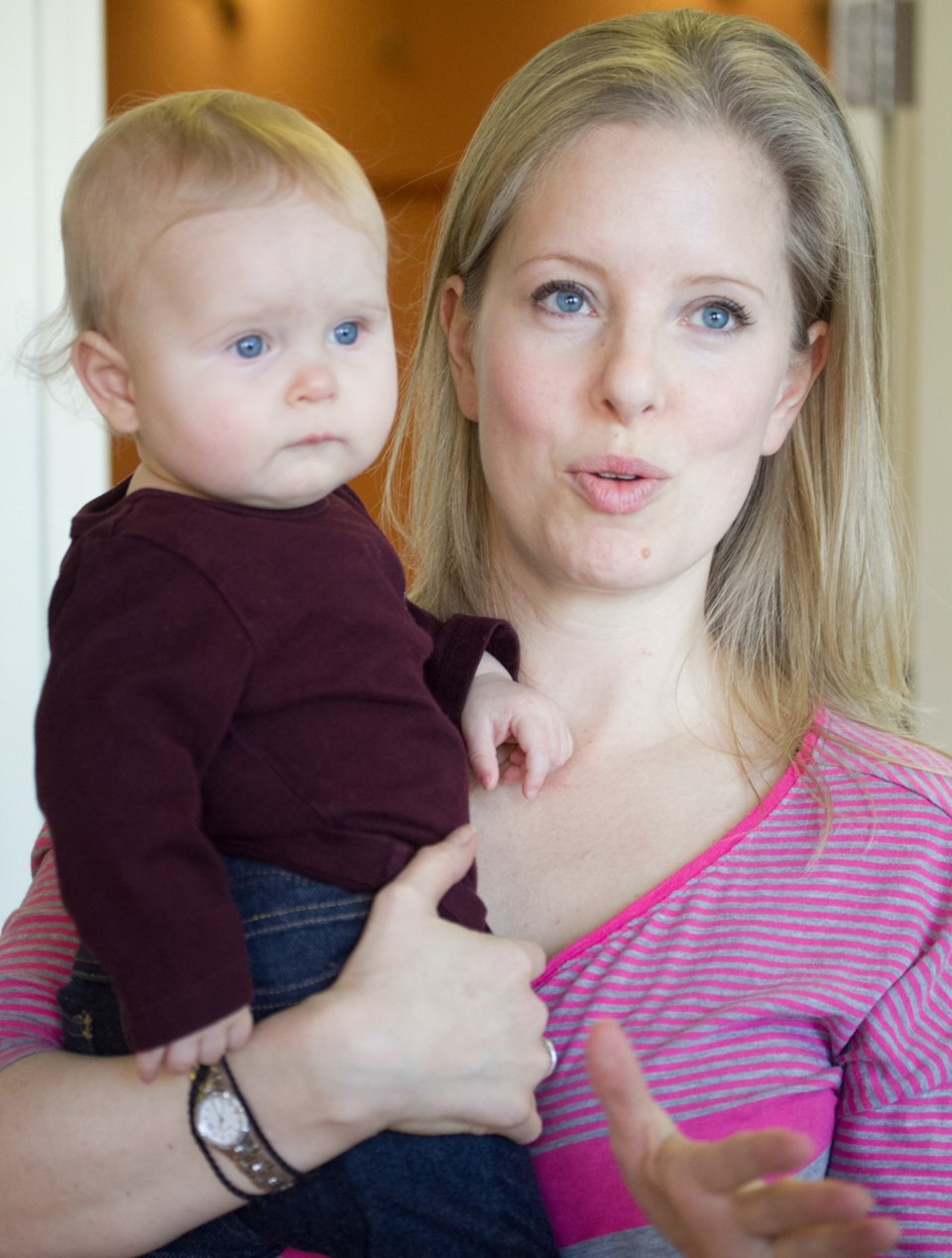First-time mother Shauna Douglas never put much thought into developing a bond with her baby, Naomi.
“I think it’s innate,” said Shauna. “Honestly, it’s absolutely impossible to resist in a lot of ways.”
The 34-year-old Victoria woman says there were initial trials with Naomi, now 10 months. But the relationship between the two is now very comfortable. And she has no qualms about doing it all over again.
“[Naomi] is so much more self-aware now — she understands certain things,” said Shauna “There will be more [babies].”
Developmental psychologists have long been interested in the relationship between infants like Naomi and their caregivers, usually mothers. The success of these relationships, usually developed within the first year, can have a significant influence on the ability to form bonds with others later in life.
Furthermore, a successful infant-caregiver relationship is increasingly shown to be an important influence on an individual’s intellectual, cognitive development.
“The infant-caregiver relationship is sort of a foundation for a lot of other things in social development,” said Ulrich Mueller, associate professor of developmental psychology at the University of Victoria.
Mueller said developmental psychologists are reluctant to use the word “bond” or “bonding” to describe that relationship. “Bonding” is usually reserved for the instantaneous recognition between mother and baby in non-human animals, the kind of imprinting that causes a juvenile buffalo to follow its mother in the herd.
Mueller said humans don’t display that instant connection. Instead they form, during the first year of life, what developmental psychologists call an “attachment relationship.”
The most important developmental aspect of these attachments is whether they are secure or insecure.
In a secure attachment, babies learn to expect that their needs will be met with kindness and sensitivity — usually a good predictor of whether the child will be kind and sensitive toward others later on in life, in the classroom, in the workplace or in romantic relationships.
“This expectation is built up over the first year of life and affects how the child interacts with others later in life,” said Mueller.
An insecure attachment, however, where babies don’t learn to expect that their needs will invariably be satisfied, can make it difficult for someone to develop trusting relationships with others later in life. “The infant-caregiver relationship is sort of a foundation for a lot of other things in social development,” said Mueller, who notes that attachment has been shown to develop within six to 12 months of the baby’s first year.
Infants adopted prior to six months, for example, show no difficulty in developing a secure relationship with adoptive mothers or fathers. After six months, there appear to be more problems.
Mueller cautioned, however, against what he called “infant determinism,” a Freudian notion that infant experiences can set an adult’s life course.
The child who, for whatever reason, doesn’t form a secure attachment as an infant is not guaranteed a life of mistrust, misery and poor intellect. Trends just indicate that the risks of problems rise.
Luckily for most babies, Mueller said, adults naturally find them cute and attractive. When we hear them cry, we want to pick them up and soothe them. So the majority of infants develop secure attachments to a caregiver.
“There is a certain availability and sensitivity you have to display, but often it is so natural, you don’t even have to think about it,” he said.
Eva Bild, a doula, birth and childcare educator and part owner of the Mothering Touch Centre on Fort Street, said the infant-caregiver attachment is a learning process for the mother.
“The mother has to actually fall in love with that baby in order to make the enormous investment and effort to keep that baby alive,” said Bild.
That love is what allows a mother — and it is usually, although not necessarily, the mother — to form a secure attachment to the baby. And that attachment, in turn, teaches babies to become adults with good reserves of emotional strength.
“Babies need that attachment to learn how to be people,” she said.
Bild said young adults leaving home for new cities for the first time often display what they have learned as babies. They form groups of reliable friends, they gather for special occasions like Thanksgiving and basically form small families of their own.
As for how to nurture that infant-caregiver attachment, Bild has a one-word piece of advice: Surrender.
She said too many parents set themselves up for disappointment with unreasonable expectations. They are convinced their children will sleep through the night from the start. Mothers take it for granted they will soon be back in tight jeans, working and earning promotions.
Bild’s advice is to relax and not be in such a hurry.
Newborns want very little, other than to lie undisturbed on top of another human being for the first six to 12 weeks. They also want constant access to a breast.
So if a mother can relax with a stack of books or movies, she can get to know the baby, she said. Three to six months later, caregivers can set a few new challenges. But by then, the attachment will be established.
“People worry about giving in to their babies — they think they will lose themselves,” said Bild. “But the goal really is to lose themselves, at least for a little while.
“Cuddling in and snuggling in with our babies fills us with love, which we then use to fill our babies back up.
“Babies actually prompt us to experience these feelings, which we then return to them,” said Bild. “One of the things we need to do is just surrender to it all.”



